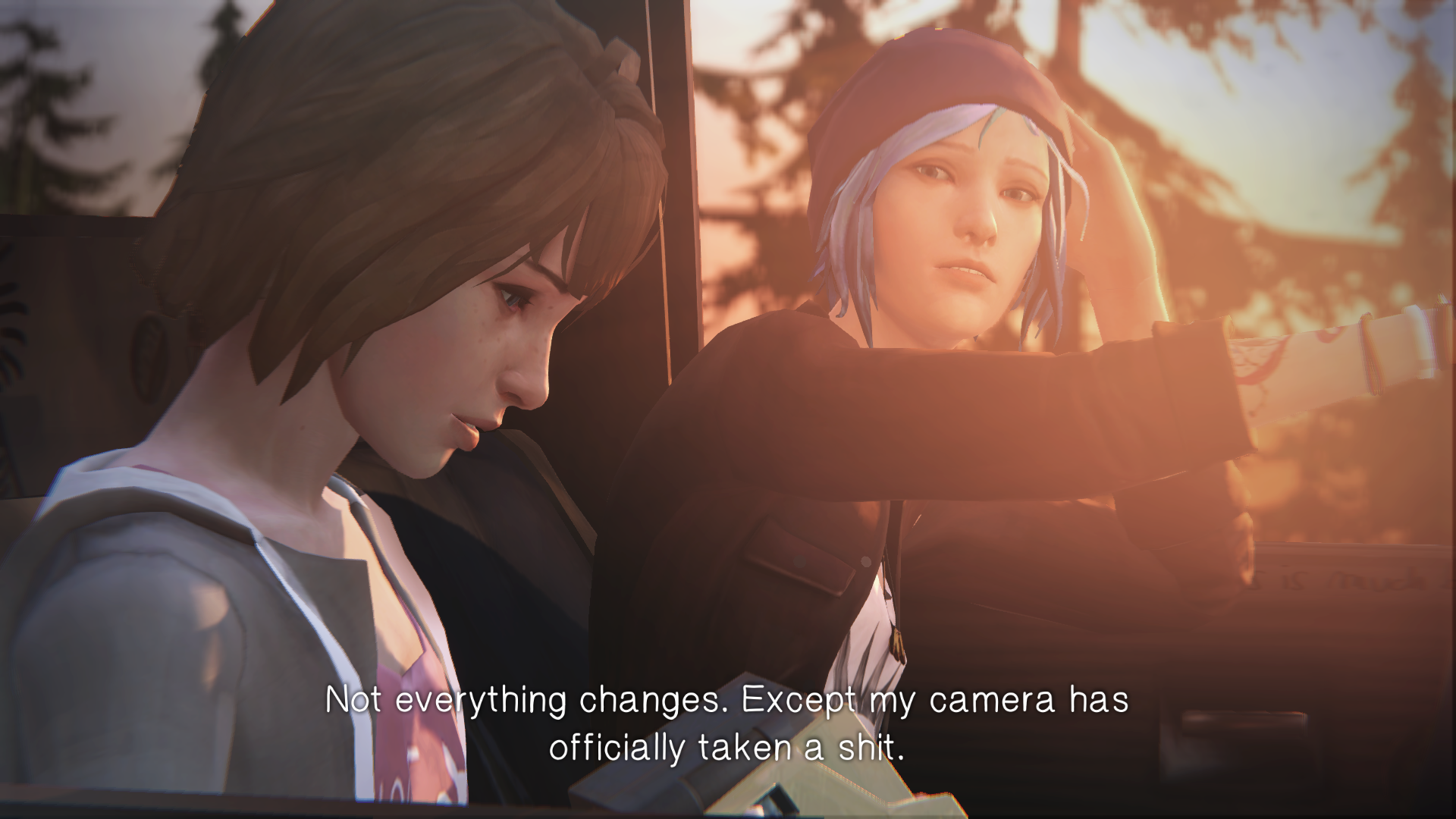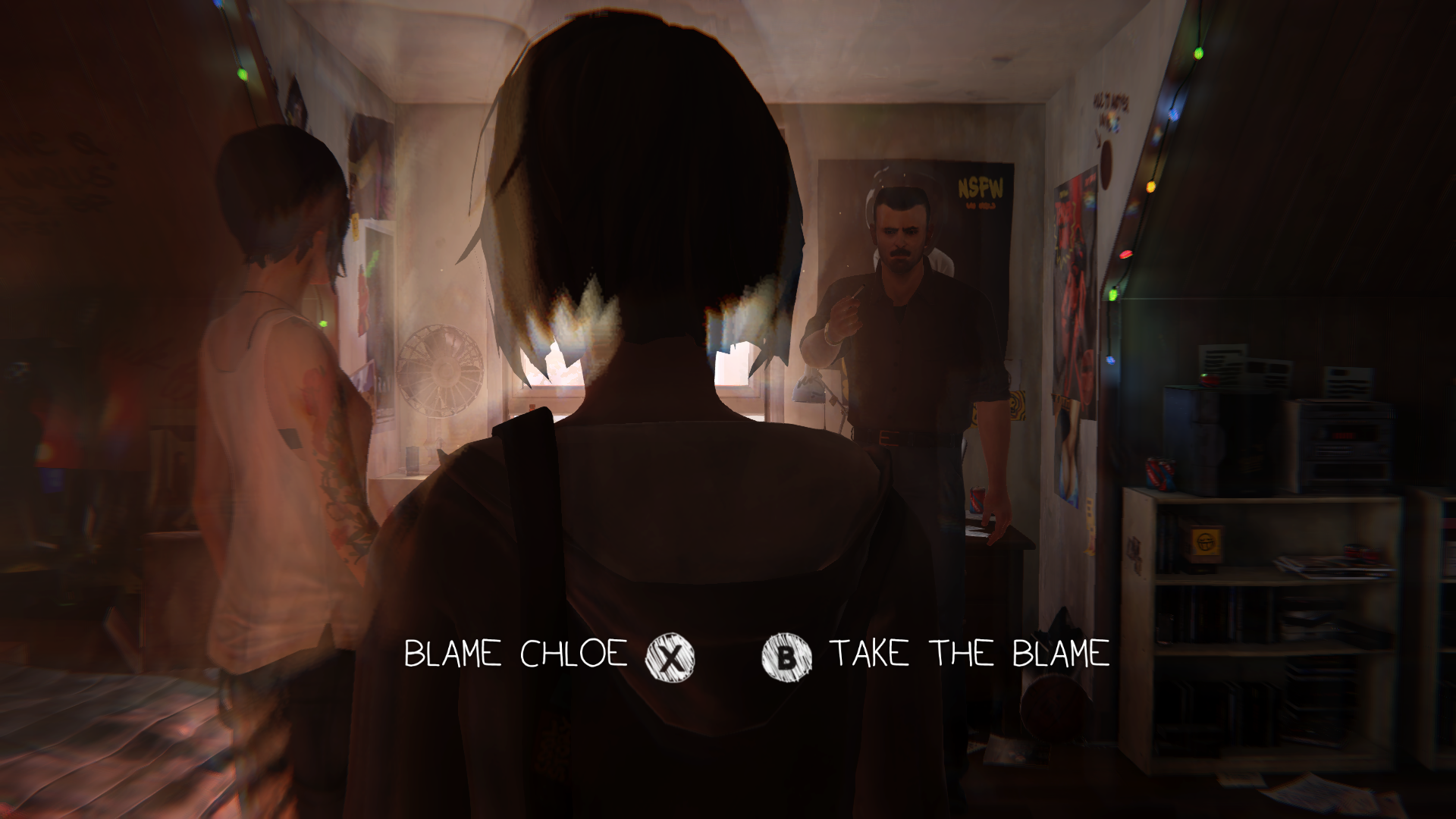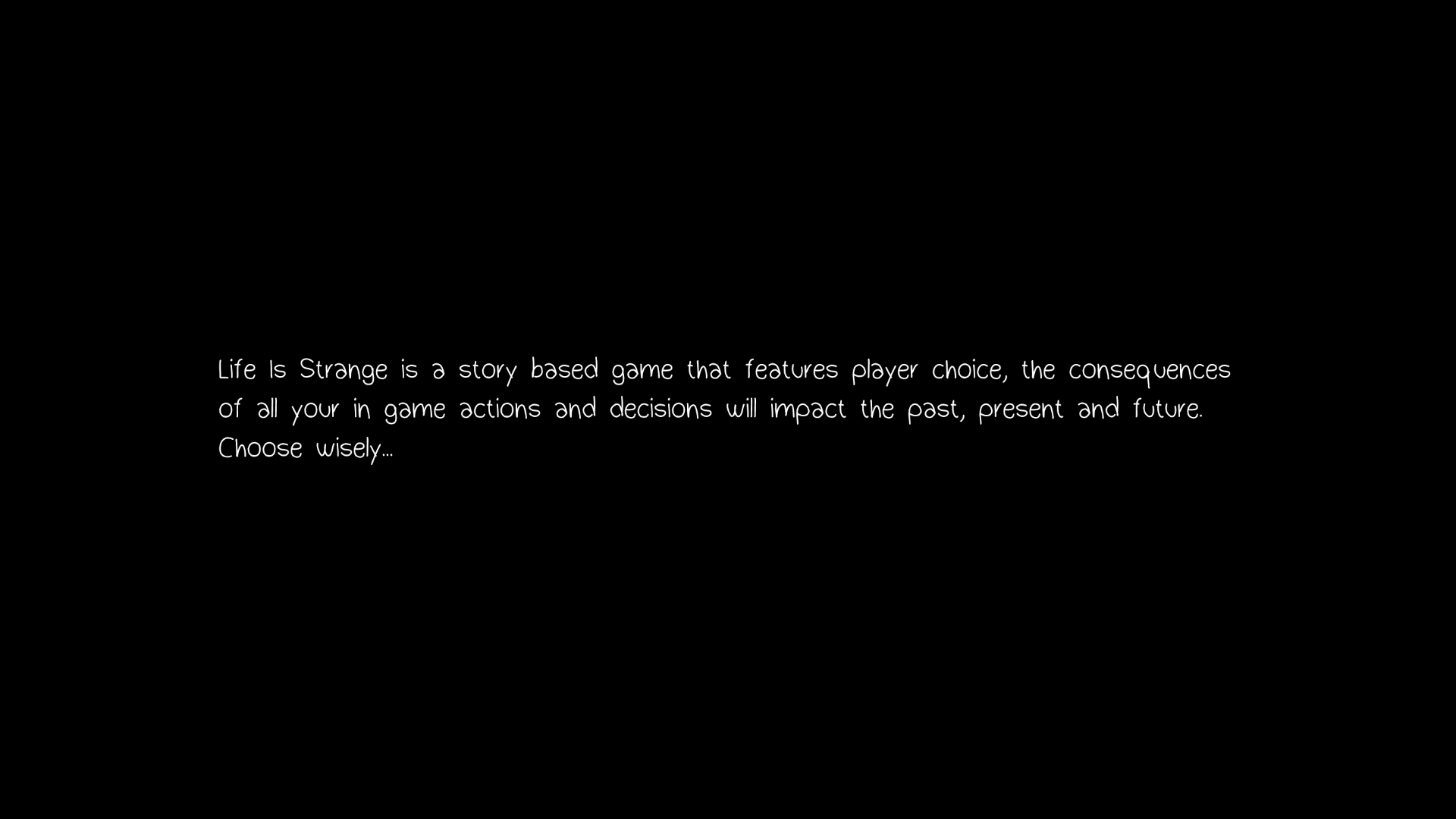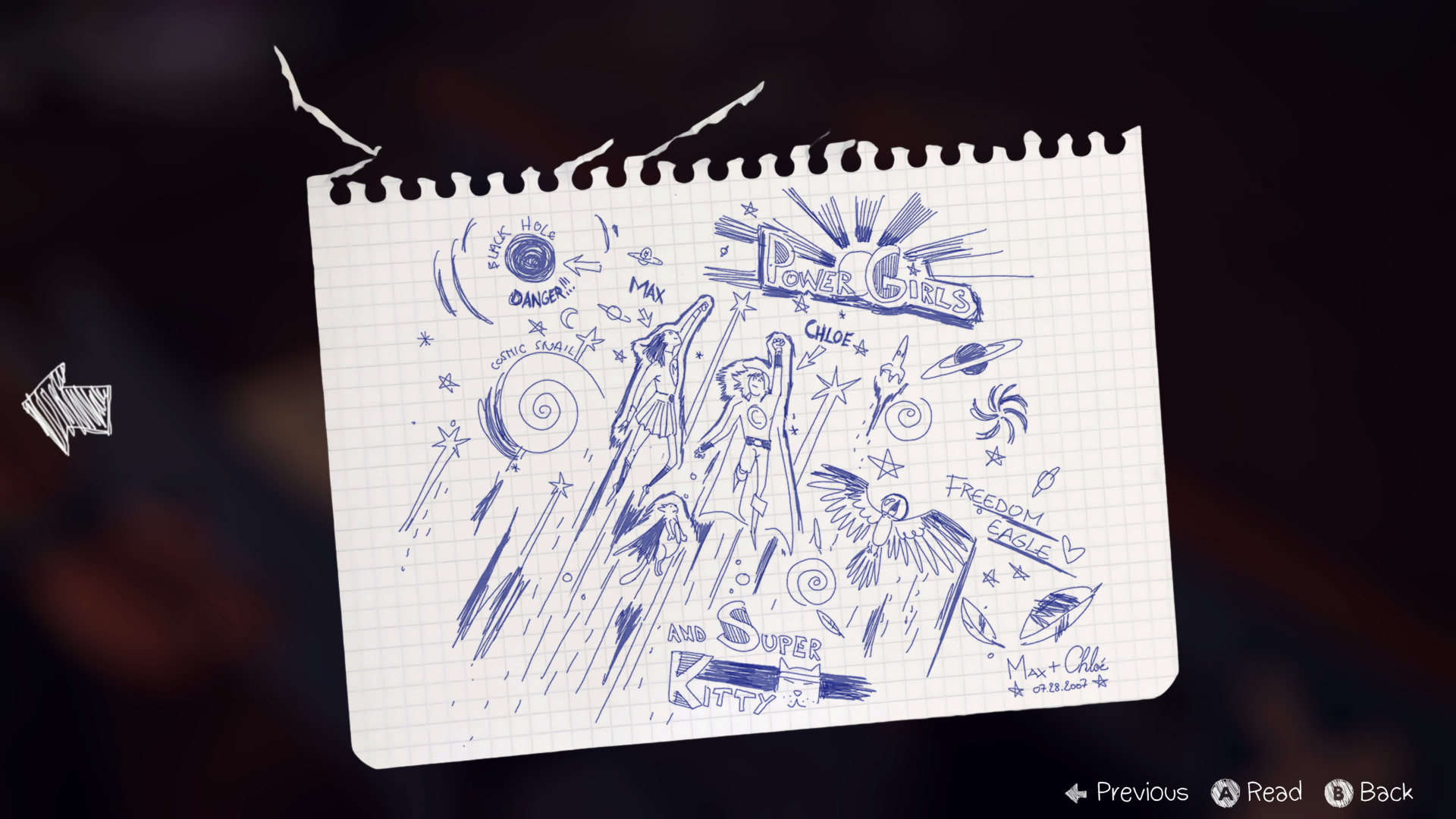Life is Strange review
The sole reason I purchased Life is Strange is because my little sister told me (multiple times, and usually in all CAPS) that I absolutely had to experience one of the best games ever. And given that it remains one of the five highest-rated games on the Xbox Store, she wasn't alone in that opinion. So I did what any good big brother does: I listened.
To be honest, I wasn't all that into Life is Strange at first. Sure, the character relationships were strong and the SciFi elements caught my interest. But the animation was wonky (although not the cool “indie” way) and the walking and investigating felt a bit hollow.
Then I played Episode 3 and everything changed. Suddenly, this game was all I could think about. Kim and I stayed up late, talking and hypothesizing about what the smallest minutia could mean. (Yes, it’s one of those games; you know how I feel about those games.)
Small town feel
The town of Arcadia Bay isn’t just a fictional village along the coast of Oregon—it’s a real place. Samuel, Joyce, Victoria, and Mr. Wells are all real people. The game established its setting and premise with an immediacy that continues to amaze me; as a writer, I can only dare to dream of something like that. The result is a veritable stroke of genius on the part of Dontnod Entertainment, a masterwork of the highest degree.
It took Life is Strange 10 minutes to do what it took Mass Effect 10 hours to achieve. The game built a fully realized world inhabited by deep and believable human beings, then infused that place and those people with a kind of mystery and magic that can only be found in remote corners of our world.
There’s a level of freshness to the whole of Arcadia Bay, a casual (and sometimes reckless) disconnect from reality that can sometimes feel like a dream…that hides a putrid, rotten carcass underneath. Things are very wrong in Arcadia Bay. And everyone is either in denial of that fact or actually partaking in the town’s descent into the macabre.
Maxine Caulfield attends Blackwell Academy, a prestigious arts school that attracts students from all around the country. Her focus is photography, and she’s sitting in the middle of class one day when she slips into a…coma? Vision? Nightmare? Whatever it was, Max watched a freak storm destroyed Arcadia Bay. And, in something of a panic, she runs to the bathroom and…accidentally rewinds time.
Twilight Zone twist
If time manipulation in a realistic world fills you with questions, don’t worry—you aren’t alone. This initial moment is the first of dozens of instances when Max uses this new power, becoming a Sherlockian sleuth who can work through a conversation, then rewind to absolutely eviscerate people with the secrets they haven’t even shared yet. (The same goes for wandering around and finding clues, using this time mechanic to slip into locked places or avoid being noticed.) And given Max’s ever-present camera, she’s able to photograph (or take note of) everything of interest, compiling it in her diary to serve as a codex for any and all relevant data.
Mechanically, it works far better than it should. There’s nothing inherently wrong or clunky, and I was continually surprised how much I enjoyed walking through a room, studying every item, and filing away the details for future use. Max can also interact with people in these environments, and the conversations often result in small but meaningful changes, either to the story or to the lives of those involved. Getting to know her classmates or neighbors around town fleshes out the people and relationships as well as—if not better than—a BioWare game, and that is praise of the highest degree.
(I will note that the conversations and investigations can create a disjointed flow. Pacing was an issue at times, especially in the final chapter. My wife disagreed, but I lost interest during a few conversations that probably should have been much more emotionally impactful.)
Close personal relationships
Life is Strange embraces its style, from the hipster overtones to clichéd characters. That comes full circle in the second or third episode when Max begins to strip the veneer away and see the realities behind her world and the people in it, developing an understanding that her classmates are so much more than they appear. Even the most infuriating characters get their redeeming moments, and it’s a testament to the writing that one scene in particular—involving a character I’d wanted to strangle for the entire game—brought me almost to tears.
This will seem paradoxical, but somehow Life is Strange manages to set the benchmark for worldbuilding and storytelling in any game I've played while also committing the Unpardonable Sin among storytellers: the game forced its characters along preset paths to reach a predetermined ending, regardless of the organic flow of events and developments of character arcs. Dontnod Entertainment exemplified a mastery of storytelling and choice-driven narrative that I’ve rarely found in any medium, and the sheer depth of content and layered ambiguity felt like an entire 8-season box set of Stranger Things or Twilight Zone or Twin Peaks. (The game doesn’t hesitate to reference the older classics in this regard, and the self-awareness manages to draw attention without breaking the illusion of a self-contained world.)
Coming to a close
However, despite this extraordinary achievement, the game fouled everything up in the final hour. I experienced at least two different shocking, fulfilling, and excellent resolutions, only for the game to pointlessly drag me back into the muck. Dontnod took on the role of “Indian giver,” granting me glimpses of happy endings only to tear them away and shoehorn the story where they wanted it. This is an underhanded move to force additional tension, and for all of the truly unparalleled things this game gave to me, I walked away disappointed and frustrated. My glorious experience was tarnished, and no amount of theory videos and conspiracy ideas will fix that.
My curiosity forced me to go back to experience an alternate ending. (The final choice was the only point where my wife and I disagreed.) While the overall effects are probably much, much worse within the context of the game’s world, the personal outcome for Max is significantly better, and also more in line with what I would have envisioned for her. That ending also avoids the second—and worst—moment where I could literally see proper closure yanked away from everyone involved, myself included.
When I play choice-driven games, I’ve always been the player who forces myself to stick by whatever my gut reaction was, even if I dislike the results; after all, isn’t that the entire purpose of “choice and consequence” in life? But because the game’s other ending wasn’t my first true experience, seeing the other side of the coin feels like a cop-out, an attempt to rectify my disappointment with how this magnificent story concluded.
One final word
…but, man, I was one choice away from some semblance of catharsis. That knowledge soothes the pain, but doesn’t quite heal the wound. Then again, perhaps this is the one time when rewinding time for the sake of a better outcome is encouraged. To quote the game, I believe it was Max who said:
“Who ever said we only have one fate?”
I can’t help but repeat myself: Life is Strange stands out as a masterpiece of storytelling and worldbuilding. There’s a level of depth to every aspect of this game that allows people to discover new things four years after release, and what the game lacks in AAA polish it more than makes up for in character. But for all of the wonderful worldbuilding, organic character development, and “WTF moment”-inducing drama, the game fails in the same way that so many choice-driven stories do: it funneled a mirage of endless possible outcomes into a final, world-changing decision, and it did so at the cost of much of what made the game great. That’s not a failing, but it’s certainly a disappointment.
Author’s note: Life is Strange is a paranormal (and psychological) thriller that follows the story of high school students. If excessive profanity, tense scenes, and hauntingly dark themes make you squeamish, proceed with caution…but I do still recommend that you proceed.
In a nutshell
For an indie game from a little-known French studio, Life is Strange packs a tremendous punch. The game developed an intense cult following, a community of gamers so passionate that they filled the internet with theories about the dozens of unanswered mysteries that linger long after the final credits roll. Even now, I sit here and struggle to express my feelings; despite my conflict about the ending, watching some of those theory videos kept me up until after 3 a.m. last night. And as much as I want to focus on the bad ending, I can’t help but admit that Life is Strange is a truly superb game that I will be thinking about for a long, long time.
Pros
+ Living, breathing world…
+ …full of living, breathing people
+ Paranormal mysteries
+ Character relationships
+ Organic growth/development
Cons
- Irregular pacing
- Unanswered questions
- Lack of catharsis







